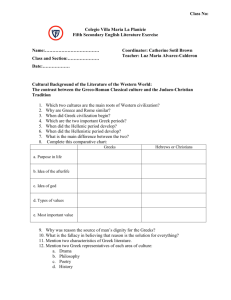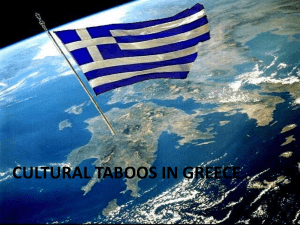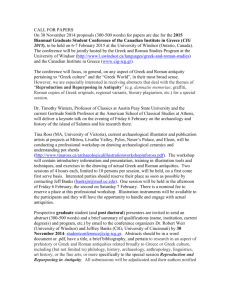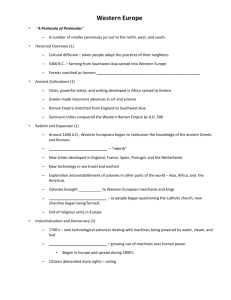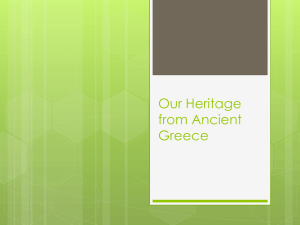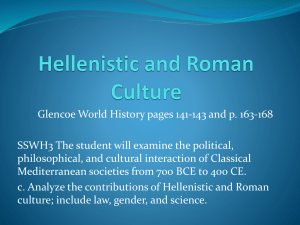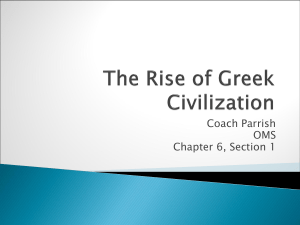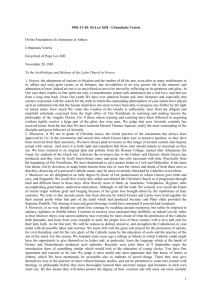The Classical Period
advertisement
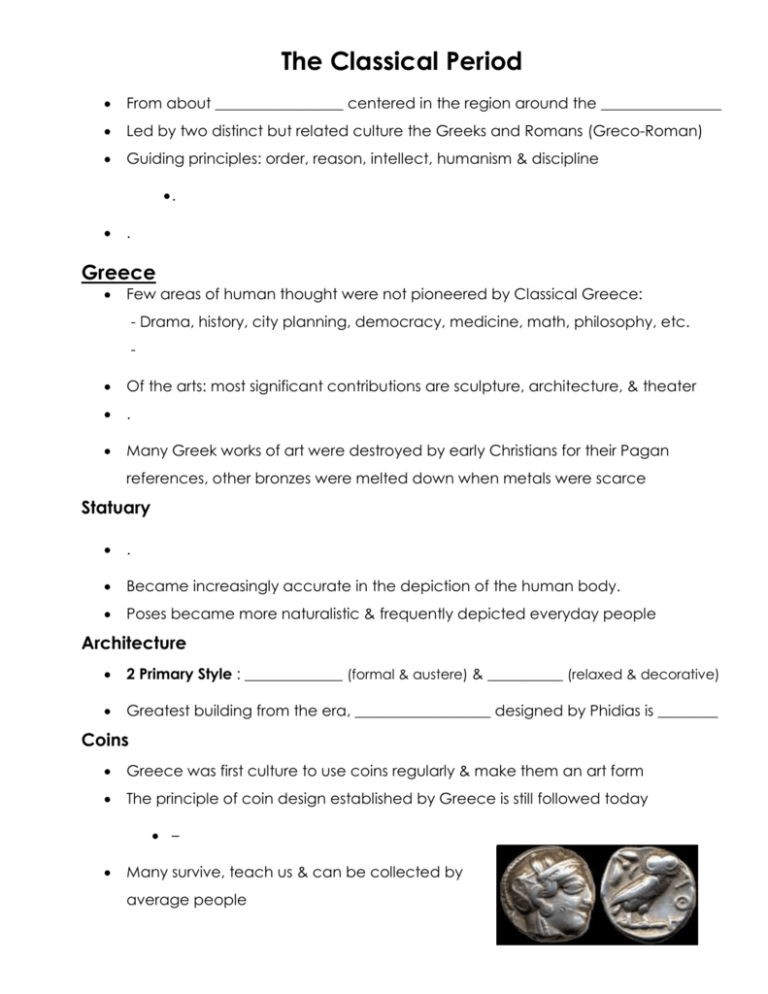
The Classical Period From about _________________ centered in the region around the ________________ Led by two distinct but related culture the Greeks and Romans (Greco-Roman) Guiding principles: order, reason, intellect, humanism & discipline . . Greece Few areas of human thought were not pioneered by Classical Greece: - Drama, history, city planning, democracy, medicine, math, philosophy, etc. - Of the arts: most significant contributions are sculpture, architecture, & theater . Many Greek works of art were destroyed by early Christians for their Pagan references, other bronzes were melted down when metals were scarce Statuary . Became increasingly accurate in the depiction of the human body. Poses became more naturalistic & frequently depicted everyday people Architecture 2 Primary Style : _____________ (formal & austere) & __________ (relaxed & decorative) Greatest building from the era, __________________ designed by Phidias is ________ Coins Greece was first culture to use coins regularly & make them an art form The principle of coin design established by Greece is still followed today – Many survive, teach us & can be collected by average people Significant Works of Greek Visual Art Charioteer of Delphi The Parthenon Warrior of Riace Language Arts Plays: . Usually Utilized 1 lead actor and a “chorus” to provide background & insight 3 dominated the era, provide all significant surviving plays __________________: most famous poet/playwright – wrote Agamemnon – appealed to intellect – added a second & later third lead actor __________________: contemporary of Aeschylus – wrote Oedipus – more human and subtle than others __________________: most realistic of Greek tragedy – deal w/ emotions not events – wrote The Trojan Women Fables Brief tale that contains a moral lesson stated clearly at the end as a _____________ Use of animals as central characters w/ Anthropomorphism – use human characteristics _______________ – considered father of the fable – Fox & the Grapes / Tortoise & the Hare Performing Arts The first record of Acting is from 534 BC The Greek performer Thespis is the first known ______________ Prior to Thespis, stories were told in songs & dance or 3rd person recitals, . In honor of Thespis, actors today are still commonly called ___________________ The Greek / Roman Comparison Roman arts borrowed heavily from the Greeks while they focused on powerful government and military . By comparison, virtually every artistic technique used during the renaissance 1,900 years later was invented by the Greeks (except oil paint & mathematically accurate perspective) Greeks worshipped the aesthetic qualities of great art & wrote extensively on artistic theory . The BIGGEST impact of the Romans was the ability to spread (through conquest) and preserve the accomplishments of the Greeks Roman Classical Painting Most Roman painting was done on wood panels which eventually decayed . The city of Pompeii, encased in lava in 79 A.D. is the source of many preserved works of art Often Roman painting was copied from older Greek works, or done by immigrants from the Greek colonies. . . Architecture It is in architecture that Roman art produced its greatest accomplishments. It was the innovative use of concrete (invented earlier but greatly improved) that enabled Rome’s greatest works Roman architecture capitalized on the use of two elements: Arches & Domes . __________________: a temple, completed in 126 A.D. – best preserved building of its age in the world, the dome is the original unreinforced ______________________. _________________: an arena, completed in 80 A.D. – held over ___________– site of gladiator fights, races, even staged naval battles, it had a retractable fabric roof Circus Maximus: a chariot racing stadium completed around 50 B.C. held about __________________________ spectators. Miscellaneous It is believed that music was an extensive part of public life, but few unique contributions are recorded . Few contributions were made in the language arts – Vergil’s Aeneid perhaps the most significant . The first-ever shopping mall was built by the Emperor Trajan in Rome. It consisted of several levels and more than _________________ stores that sold everything ranging from food and spices to clothes Significant Works of Roman Visual Art Colossal head of Constantine Pantheon Coliseum Trajan’s Column Husband & Wife Portrait -Pompeii
